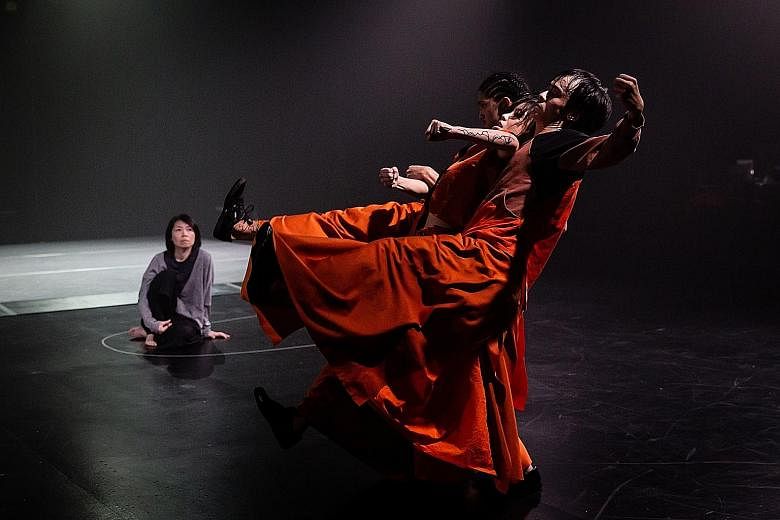PHENOUMENON
T.H.E Dance Company
Esplanade Theatre Studio/Dec 14
The audience members gathered in the foyer of Esplanade's Theatre Studio with a growing sense of excitement as they were sternly adjured to listen to the announcement.
They were told to sit in the designated islands outlined in grey tape within the performance space or on chairs that lined the perimeter, and were welcome to stand in all other spaces, but told to be prepared to move away quickly should the dancers approach.
This was for the audiences' own safety, but also permitted an autonomy that encouraged them to be responsible for their own experience of the performance.
In the theatre, what appeared to be orange boulders or piles of clothes dotted the black space, but these slowly began to pulse and grow until a dancer emerged out of each.
Their coordinated breathing drew the audiences into intense concentration that built into expectation with each inhale and exhale, until it escaped through the cathartic release of a prolonged gut-wrenching yell that was simultaneously a combative roar and a pained wail.
The various elements of production and performance came together in choreographer Kuik Swee Boon's new work PheNoumenon to create an intimate and immersive space that expertly controlled the ebb and flow of tension within the audience.
Kent Lee's sound design agilely shifted the atmosphere and translated the energy of the movement into sounds that were able to move the audiences or lull them into a trance.
The orange of the costumes by Loo An Ni became a reminder of the asceticism of Buddhist monks, but the multiple layers of excess cloth made the dancers appear strangely awry, underpinning the inherent madness and contradictions of modern society.
A bunch of black shoes dropped from the ceiling and the dancers scrambled to put them on.
Anthea Seah and Nah Jie Ying artfully weaved their limbs through black rubber slippers and held them in their teeth as they became a tangled mass of bodies and flip-flops.
A trail of black footprints were left on the grey mat in the wake of the dancers as they formed a line to slowly walk across the room.
The images combined to convey the way materialism brings out people's primal urges and turns them into unrecognisable animals and perhaps offer eschewing the rat race as a way out of this cycle.
Arresting as the imagery was, it was blatant and the various images were somewhat superficially connected.
In this work, Kuik's self-named movement technique, "the hollow body" - based on the idea of connecting mind, body and emotions - which first found expression in Helix, In Progress (2016), and was crystallised in Invisible Habitudes (2018), has reached a further stage of development.
Added to the usual lithe and sinuous flow, there is now a weight and gravity that hints at a raw power and aggression that was previously lacking.
The athleticism was particularly apparent in Ng Zu You's solo that had him fiercely jumping and barrelling through space.
While this provided an arc of dynamism that contrasted with the more solemn sections, the spectacle may have too easily dispersed the dynamic tension and reduced it to a moment of enjoying well-executed tricks.
While PheNoumenon had some seemingly superfluous moments, it still demonstrates that Kuik is a master of movement.

